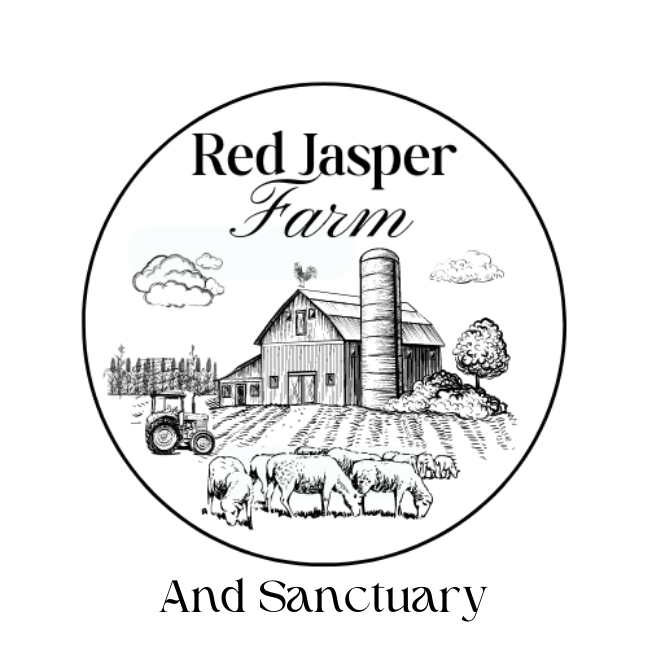New arrivals at Red Jasper are coming soon!
Learn about some new arrivals coming to the farm soon, as well as why a certain backyard insect has been disappearing lately...
Author: Arloa Chadwick
The future home of the Red Jasper bees decorated in flowers
We are very excited Red Jasper Farm & Sanctuary is getting bees this May! We purchased two NUCs (Nucleus Colonies) from Rocky Mountain Bee Supply in February. What’s a NUC? It’s not an explosive of any kind (until you open the door, then it’s kind of like a bee bomb!). A NUC a kit full of bees, a new queen, and five frames. Two of which have honey and pollen, as well as one frame with eggs, one with larva, and and the last with pupae. We also bought two hives, sadly not the cute wood kind, these are plastic. These hives are specially designed with two layers of insulation to keep bees cool in summer and warm in winter, which is necessary for our tough climate and high wind out here at Red Jasper.
What inspired us to get bees? Well, a certain decline in wild pollinators made us want to get some honey bees to help pollinate our crops. Some day we may be able to harvest honey and wax for products to sell, but for greater chances of success for the hive, we won’t harvest any for the first year at least. We also set up some wild bee homes to help nurture and restore the wild population. However it turns out the wild bees aren’t the only ones having a hard time. Over the past year, many apiarists have been losing majority- and even all- of their hives. While one might think that would only harm the honey and wax industry, it turns out it’s also harming our crops, mainly produce. Annually, millions of Honey bees are transported around the USA each year. As soon as the almond trees in California start to bloom, the bees start their journey. Due to the large number of orchards in California, and the need for pollinators, farmers and orchardists alike need large numbers of bees. So every year beekeepers from all over the country pack up their bees and head to the west coast. California uses about 1.5 million bee hives, about 80% of the country’s commercial bees, for pollination. After the big almond bloom is over, the bees are transported to pollinate blueberries, cherries, apples, cucumbers, and many, many other crops. In the summer they are transported to the northeast and southwest to pollinate more fruits and vegetables and make honey. In autumn, the bees are moved back down to the south or special facilities to overwinter. However in the past years, pollination has gotten rather difficult due to mass colony collapses. While it’s not clear why these catastrophic collapses keep happening, there are a few ideas: Pesticide use, nutrition deficiency due to commercial bees being fed a diet of mainly sugar, verroa mite infestations, and the stress of being moved around so much. Because of all of these factors, beekeepers have already reported declines of up to 70%.
So, if that’s what’s happening to honey bees, what’s been happening to native bees? Well, sadly, native bees are suffering from a lot of the same things. Due to pesticides, herbicides, fungicides, etc. They also are disappearing due to lack of natural habitat and food sources.
So here at Red Jasper we are trying to help both native and Honey bees. By planting plenty of flowers, and supporting the wildflowers, by keeping a small amount of honey bee hives, and by providing housing for bumble and mason bees, we are trying to foster an environment for both.
We’re very excited for our next arrival at the sanctuary, and can’t wait to give you more updates as the year goes on.
How to help our vital pollinators
🌷 Plant flowers
A good way to support and attract pollinators is to plant lots of flowers- both native and not, both provide food for the bees.
🐝Give them somewhere to live
Bee houses are a good way to provide shelter for native bees. Another good way it just to leave them some bare soil or wood, they love to nest in these too.
🚫 Limit pesticide use
Or if possible, don’t use it at all. Although, as farmers, we know here at Red Jasper how hard it can be. So, if necessary, use pollinator friendly varieties and spray in the early morning before the bees wake up.
💦 Provide clean water sources
Even just a little lid with pebbles and a few cut flower head works well, just make sure it’s just a little bit with plenty of room for rocks so that they can crawl out.

